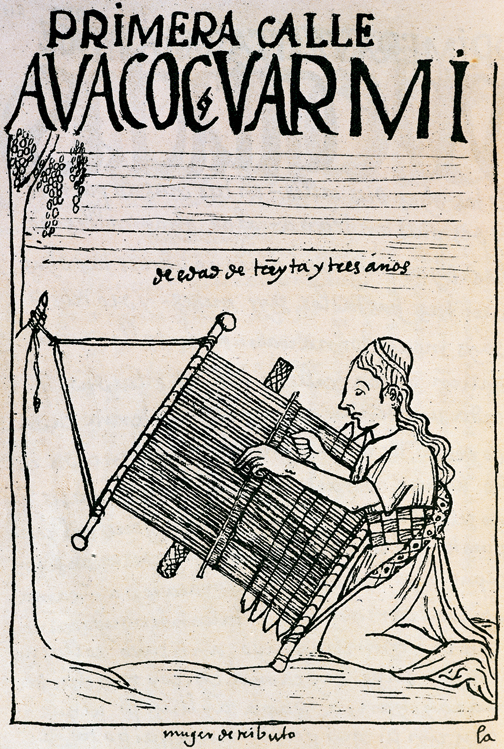A History of World Societies:
Printed Page 308
Listening to the Past
Felipe Guaman Poma de Ayala, The First New Chronicle and Good Government
Listening to the Past
Felipe Guaman Poma de Ayala, The First New Chronicle and Good Government
Felipe Guaman Poma de Ayala (1550?–1616) came from a noble indigenous family in Peru. He spoke Quechua, Aymara, and Spanish and was baptized as a Christian. As an assistant to a Spanish friar and a Spanish judge, he saw firsthand the abuses of the Spanish authorities in what had been the Inca Empire. In the early seventeenth century he began writing and illustrating what became his masterpiece, a handwritten book of almost eight hundred pages of text and nearly four hundred line drawings addressed to the king of Spain that related the history of the Inca Empire and the realities of Spanish rule. He hoped to send the book to Spain, where it would convince the king to make reforms that would bring about the “good government” of the book’s title. (The book apparently never reached the king, though it did make its way to Europe. It was discovered in the Danish Royal Library in Copenhagen in 1908.) In the following section, Guaman Poma sets out certain traditional age-
“The first path was that of the brave men, the soldiers of war. They were thirty-
The Fifth Path was that of the sayapayac [those who stand upright]. These were the Indians of the watch, aged from eighteen to twenty years. They served as messenger boys between one pueblo and another, and to other nearby places in the valley. They also herded flocks, and accompanied the Indians of war and the great lords and captains. They also carried food. . . .
The Eighth Path was that of boys aged from five to nine years. These were the “boys who play” ( puellacoc wamracuna). They served their mothers and fathers in whatever ways they could, and bore many whippings and thumpings; they also served by playing with the toddlers and by rocking and watching over the babies in cradles. . . . The Tenth Path was that of those called wawa quirawpi cac (newborn babies at the breast, in cradles), from the age of one month. It is right for others to serve them; their mothers must necessarily serve them for no other person can give milk to these children. . . .

The First Path was that of the married women and widows called auca camayocpa warmin [the warriors’ women], whose occupation is weaving fine cloth for the Inca, the other lords, the captains, and the soldiers. They were thirty-
The Sixth Path was that of those called coro tasqui-
The Seventh Path was that of the girls called flower pickers. . . . They picked flowers to dye wool for cumpis, cloth, and other things, and they picked the edible herbs mentioned above, which they dried out and stored in the warehouse to be eaten the following year. These girls were from nine to twelve years of age. . . .
The Ninth Path was that of the girls aged one and two, who were called llucac warmi wawa (“young girls who crawl”). They do nothing; instead, others serve them. Better said, they ought to be served by their mothers, who should be exempt [from tribute] because of the work of raising their children. Their mothers have to walk around carrying them, and never let go of their hands.”
Source: Felipe Guaman Poma de Ayala, The First New Chronicle and Good Government (abridged), translated by David Frye (Cambridge, Mass : Hackett Publishing Company, 2006). Copyright © 2006 by Hackett Publishing Company, Inc. Reprinted by permission of Hackett Publishing Company, Inc. All rights reserved.
QUESTIONS FOR ANALYSIS
- The “First Path” among both men and women is the one with the highest status. Judging by the way Guaman Poma describes these, what do the Incas especially value? How do his descriptions of other paths support your conclusions about this?
- In what ways are the paths set out for boys and men different from those for girls and women? In what ways are they similar? What does this suggest about Inca society?
- Guaman Poma wrote this about eighty years after the Spanish conquest of Peru. How do the date and the colonial setting affect your evaluation of this work as a source?